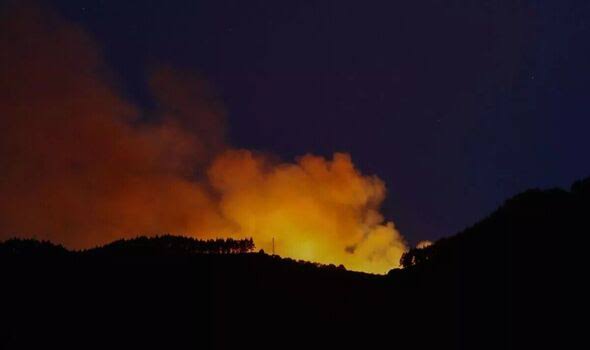Gran Canaria Airport Fire Outbreak: A Coordinated Response to an Unprecedented Crisis
On August 17, 2019, Gran Canaria Airport found itself at the epicenter of a catastrophic wildfire that rapidly escalated into one of Spain’s most severe environmental crises in recent years. The blaze, ignited in the mountainous region near Tejeda, was exacerbated by extreme temperatures exceeding 40°C, low humidity, and fierce winds, creating a perilous situation for both residents and travelers
The Scale of the Disaster
Within days, the fire had consumed over 10,000 hectares of land, prompting the evacuation of approximately 9,000 individuals from affected areas. The inferno threatened to engulf the island’s cherished Tamadaba natural park, home to ancient pine forests, and posed a significant risk to nearby residential zones and tourist destinations
Airport Operations Amidst Crisis
Gran Canaria Airport, a vital hub for both domestic and international flights, faced immediate operational challenges. Despite the proximity of the fire, the airport remained operational, thanks to the swift actions of air traffic controllers and emergency services. However, the situation demanded meticulous coordination to ensure the safety of both firefighting efforts and air traffic.
One notable incident during this period involved Transavia flight HV6365 from Eindhoven. The aircraft declared an emergency after reporting a potential fire in its hold. The control tower promptly diverted the flight, granting it priority landing status. Upon landing on runway 03L, the plane was met by emergency services, and all passengers were safely evacuated. Subsequent inspections revealed the alert was a false alarm, likely triggered by a malfunctioning warning light
Aerial Firefighting Efforts
The gravity of the wildfire necessitated the deployment of aerial firefighting resources. Over 700 ENAIRE personnel, including air traffic controllers and technical staff, played a pivotal role in managing more than 500 aerial interventions. These efforts were coordinated from ENAIRE’s Control Centre in Gran Canaria and the airport tower, ensuring that firefighting aircraft such as hydroplanes and helicopters could operate without disrupting commercial air traffic
The collaboration extended beyond the airport, involving coordination with Gando Air Base and El Berriel aerodrome. This unified approach facilitated efficient water pickups and refueling operations for firefighting aircraft, significantly contributing to the containment efforts
Ground Support and Evacuations
On the ground, approximately 700 firefighters, including 200 military personnel, were deployed to combat the blaze. Their efforts were hampered by the challenging terrain and adverse weather conditions. In response to the escalating threat, local authorities initiated evacuations, prioritizing the safety of residents and tourists in the affected zones
Hotels in central Gran Canaria were temporarily closed, and several roads were shut down to facilitate firefighting operations and evacuations. The combined efforts of emergency services, military units, and local authorities were instrumental in preventing the fire from reaching densely populated areas.
Aftermath and Recovery
In the wake of the disaster, the Canary Islands government declared the event an “unprecedented environmental tragedy.” The fire’s impact on the island’s ecosystems, particularly the destruction of ancient pine forests in the Tamadaba natural park, was profound. Reforestation and habitat restoration efforts were launched to rehabilitate the affected areas
Economically, the wildfire had repercussions for the local tourism industry. While Gran Canaria Airport remained operational, the broader perception of safety influenced travel patterns. Tourism authorities worked diligently to reassure visitors and promote the island’s recovery and resilience.
Lessons Learned
The Gran Canaria Airport fire outbreak underscored the critical importance of preparedness and coordination in crisis situations. The seamless integration of air traffic control, emergency services, and military support was pivotal in managing the multifaceted challenges posed by the wildfire. Additionally, the incident highlighted the need for robust communication channels between various agencies to facilitate real-time decision-making and resource allocation.
In conclusion, while the Gran Canaria Airport fire outbreak was a harrowing event, it also showcased the resilience and collaborative spirit of the island’s emergency response teams. The lessons learned continue to inform wildfire management strategies, not only in the Canary Islands but also in other regions susceptible to similar environmental threats.
